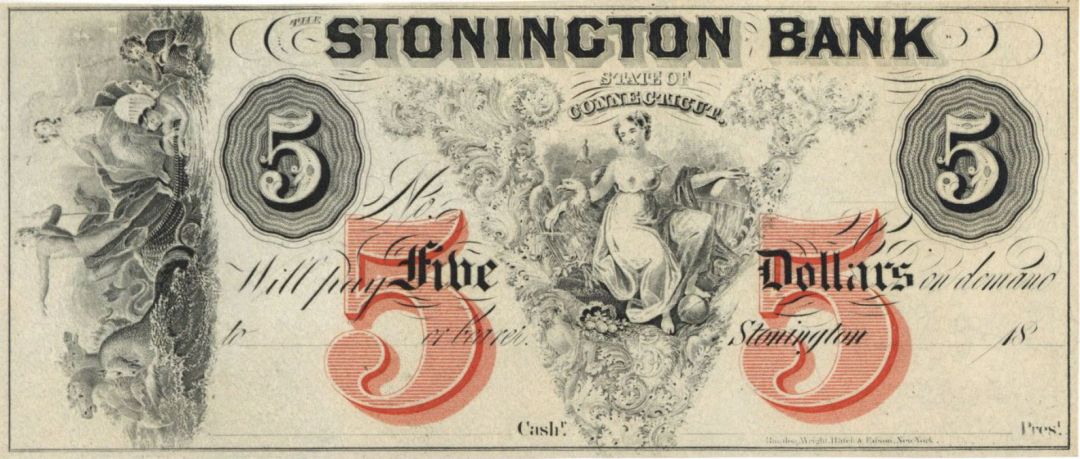Stonington Bank $5 Note - Connecticut Obsolete Note - Broken Banknote - Remainder
Inv# OB1360 Paper Money$5 Remainder. Stonington is a town located in New London County, Connecticut. The municipal limits of the town include the borough of Stonington, the villages of Pawcatuck, Lords Point, and Wequetequock, and the eastern halves of the villages of Mystic and Old Mystic. Stonington is part of the Southeastern Connecticut Planning Region. The population of the town was 18,335 at the 2020 census.
The first European colonists to arrive include William Chesebrough and Walter Palmer in Wequetequock, Thomas Minor in Quiambaug, and Thomas Stanton in Pawcatuck. Stanton established a trading house in the Pawcatuck section of town in 1649. The present territory of Stonington was part of lands that had belonged to the Pequot people, who referred to the areas making up Stonington as Paquatuck (Stony Brook to the Pawcatuck River) and Mistack (Mystic River to Stony Brook). It was named "Souther Towne" or Southerton by Massachusetts in 1658, and officially became part of Connecticut in 1662 when Connecticut received its royal charter. Southerton was renamed "Mistick" in 1665, and finally named Stonington in 1666, meaning "stony town". The town of North Stonington was set off as a parish from Stonington in 1724 and incorporated as a town in 1807.
Sir Thomas Hardy led a British squadron during the War of 1812 consisting of HMS Ramillies, HMS Pactolus, HMS Dispatch, and HMS Terror. The ships appeared off Stonington Point on August 9, 1814, and Hardy demanded that the town surrender. The town Selectmen replied with a note which stated, "We shall defend the place to the last extremity; should it be destroyed, we shall perish in its ruins." Read more at https://en.wikipedia.org/wiki/Stonington,_Connecticut










Ebay ID: labarre_galleries